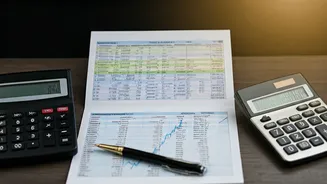Tax-Saving Fund Basics
Tax-saving mutual funds, often known as Equity Linked Savings Schemes (ELSS), are designed to help investors save on taxes under Section 80C of the Income
Tax Act. These funds provide a dual advantage: they offer tax benefits and the potential for capital appreciation. Under Section 80C, investments in ELSS are eligible for deductions up to ₹1.5 lakh per financial year. ELSS funds primarily invest in equity markets, which means that the returns are market-linked and can fluctuate. The lock-in period for ELSS investments is three years, the shortest among tax-saving investment options like Public Provident Fund (PPF) and National Savings Certificates (NSC). Once the lock-in period ends, investors can choose to redeem their investments or continue holding them based on their financial goals and risk appetite. ELSS funds offer a convenient and potentially high-return alternative for tax planning compared to traditional tax-saving instruments.
Advantages of ELSS
ELSS funds have several advantages that make them an attractive option for tax-saving investments. The primary benefit is the tax deduction under Section 80C. Apart from tax benefits, ELSS funds have the potential for higher returns than other fixed-income tax-saving options. This is because ELSS funds invest a significant portion of their corpus in the equity market. Historical data shows that equity markets have delivered substantial returns over the long term. ELSS funds offer the shortest lock-in period of just three years compared to other tax-saving instruments. This provides investors with quicker access to their funds if needed. ELSS funds are professionally managed by experienced fund managers who make investment decisions based on market analysis and research. Investors can select ELSS funds based on their risk tolerance and investment goals. Some ELSS funds focus on large-cap stocks, while others invest in mid-cap or small-cap stocks, providing investors with a range of choices to build a diversified portfolio.
Choosing the Right Funds
Selecting the right ELSS funds requires careful consideration of several factors. Investors should evaluate the fund's past performance, including its returns over different time horizons. However, past performance is not a guarantee of future returns. Review the fund's portfolio to understand its investment strategy and the sectors it invests in. Consider the fund's expense ratio, which is the annual cost of managing the fund. Lower expense ratios generally mean higher returns for the investor. Assess the fund manager's experience and track record. A skilled fund manager can significantly impact the fund's performance. Consider your risk tolerance and investment horizon. If you are risk-averse, you may prefer funds that invest in more established companies (large-caps). If you have a longer investment horizon, you may be comfortable with higher-risk funds (mid-caps or small-caps). Before investing, carefully read the scheme information document (SID) to understand the fund's objectives, risks, and other key details. Diversify your investments across multiple ELSS funds to spread risk.
Risk and Returns
ELSS funds are subject to market risks as they invest in equity markets. The value of your investment can fluctuate based on market movements. While ELSS funds offer the potential for high returns, they also carry a higher level of risk compared to debt-based tax-saving instruments. Equity markets are volatile, and investments can experience losses during market downturns. The lock-in period of three years can limit your ability to withdraw funds, even if market conditions change. Before investing, it's crucial to understand your risk tolerance and invest accordingly. Evaluate the fund's historical performance, but remember that past performance doesn't guarantee future returns. Consider consulting a financial advisor to create a personalized investment plan based on your risk profile and financial goals. Always be prepared for market fluctuations and avoid making impulsive investment decisions. Remember to regularly review your portfolio and make adjustments as needed.
Top Performing Funds
Identifying top-performing ELSS funds involves evaluating their historical returns, portfolio composition, and fund manager expertise. While specific fund performance changes over time, some consistently rank high based on various metrics. Investors should look at fund performance over different time periods (1, 3, 5 years) to assess consistency. The fund's portfolio should align with your investment goals and risk tolerance. Consider funds with experienced fund managers and a proven track record. Some consistently top-rated ELSS funds include those that focus on a mix of large, mid, and small-cap companies. The allocation between these market capitalization categories is important, as it determines the fund's risk profile. Note that fund rankings are dynamic and change based on market conditions. Conducting your own due diligence and regularly reviewing fund performance is essential before making any investment decisions. Always refer to the latest financial reports and expert advice to stay informed about the best-performing funds.













